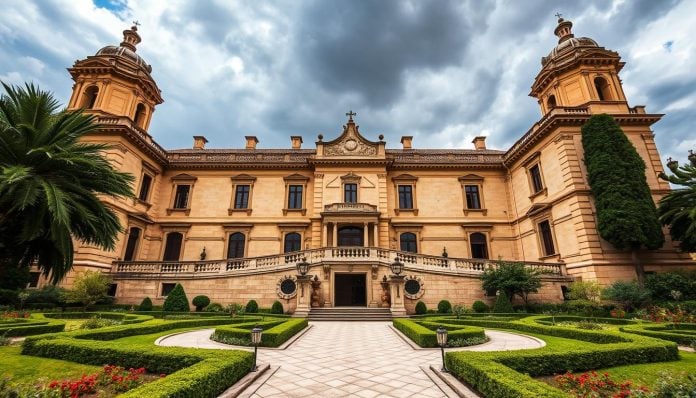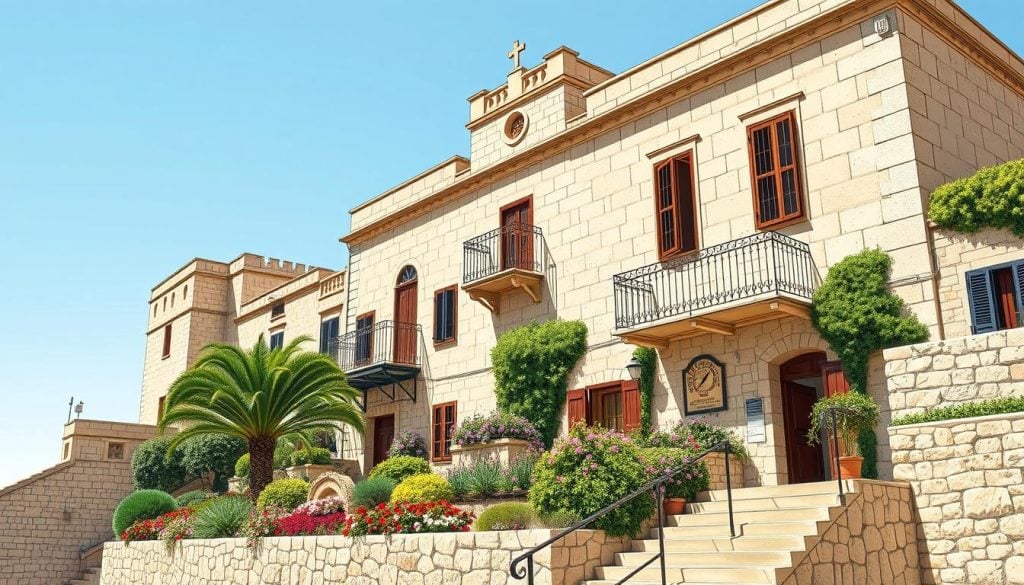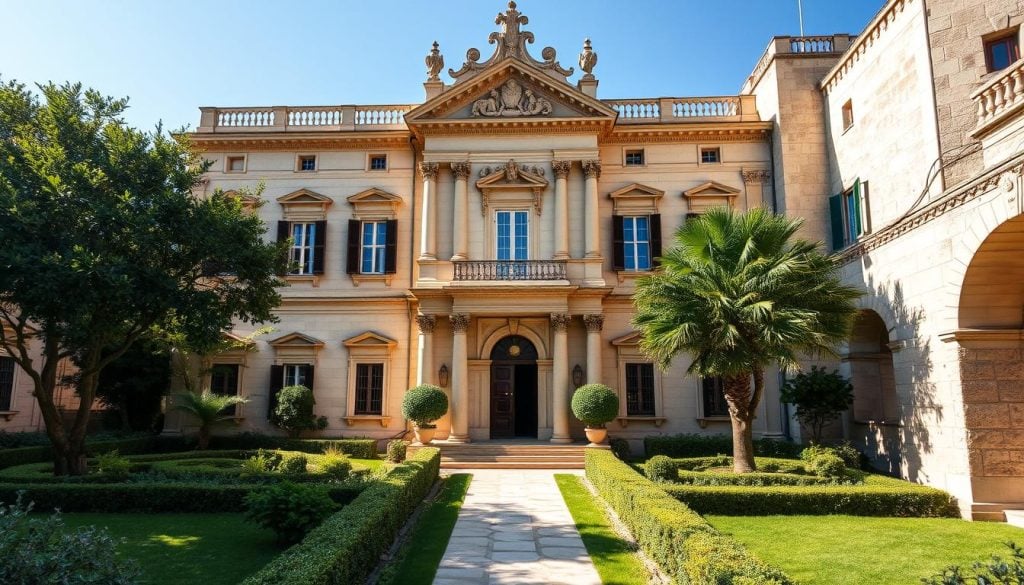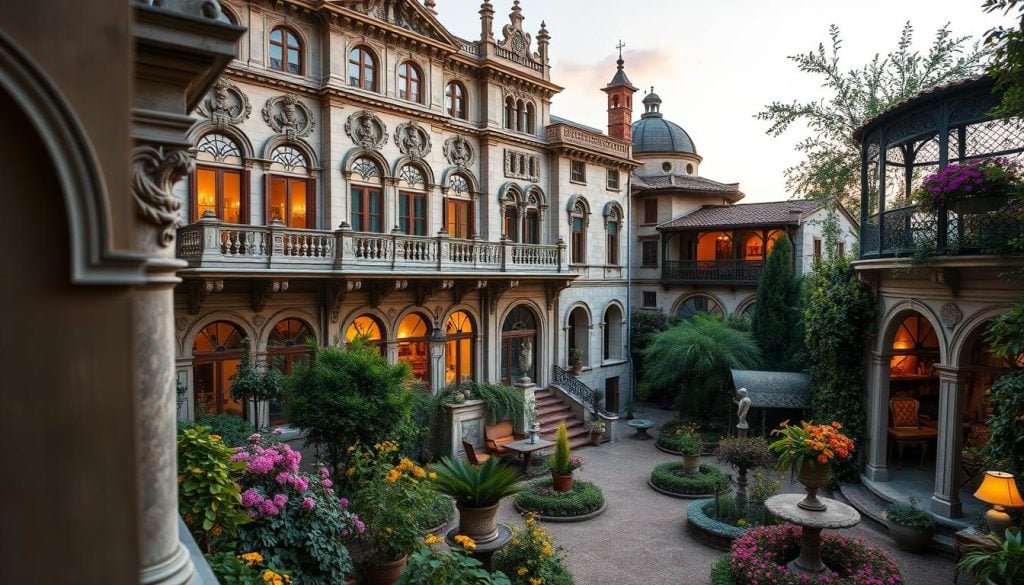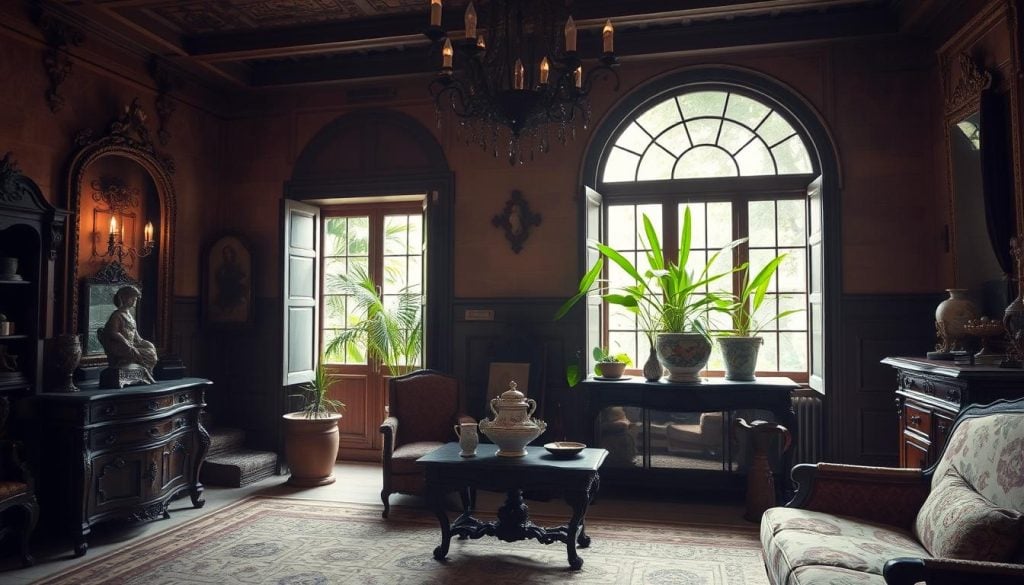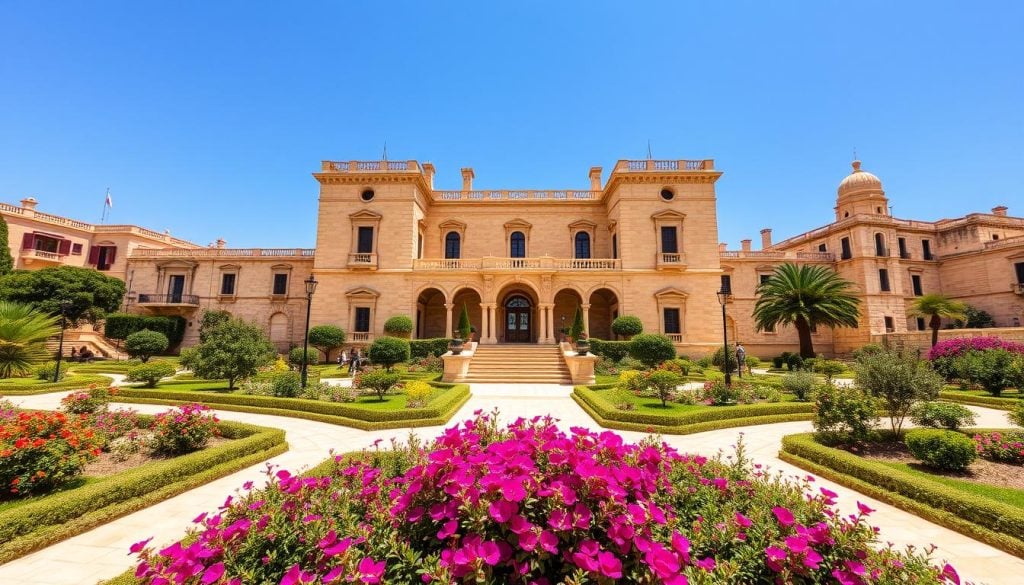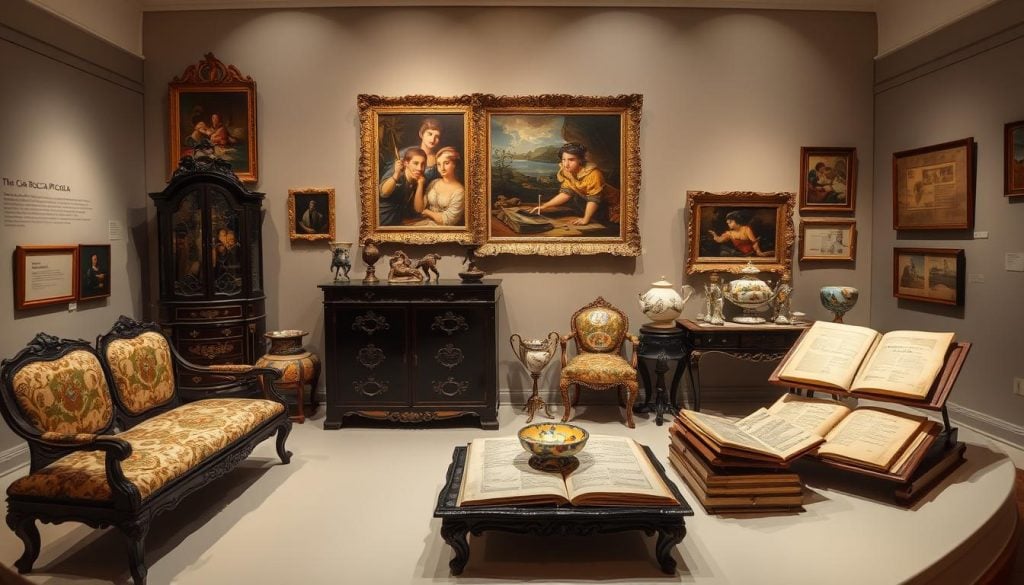Ever wondered what secrets a 16th-century palace holds? Casa Rocca Piccola, a noble family home in Valletta, Malta, reveals the island’s rich history. Built in 1580, it shows Malta’s growth through turmoil and change.
Exploring Casa Rocca Piccola’s history, you’ll see its transformation from a de Piro family home to a museum. Its walls whisper tales of Malta’s past. Let’s delve into the stories of Casa Rocca Piccola and its impact on Malta’s identity.
Introduction to Casa Rocca Piccola
Casa Rocca Piccola is a stunning example of Maltese architecture and culture. It’s located in the lively city of Valletta. This grand palace has a rich history, once home to the de Piro family for many years.
When you visit Casa Rocca Piccola, you’ll see different architectural styles and a vast collection of art and artifacts. The tours are detailed, giving you a deep look into the estate’s history. You’ll see the well-kept interiors and beautiful gardens, each telling a part of Malta’s story.
Guided tours are available every day from 10 am to 5 pm. It’s a great chance to learn about history, architecture, and culture. Each visit helps you understand Valletta’s heritage and the important role Casa Rocca Piccola has played in Malta’s history.
Founding of Casa Rocca Piccola
The start of Casa Rocca Piccola shows Malta’s growth in the 16th century. After beating off the Turkish, Malta became more important. Casa Rocca Piccola was built in 1580, showing the era’s architectural dreams.
Valletta, the new city, became a center for art and strategy. This was a time of big changes for Malta.
Construction Timeline and Historical Context
The building of Casa Rocca Piccola shows a focus on beauty and usefulness. As Malta’s society changed, so did its homes. Casa Rocca Piccola is a symbol of these changes.
It was built for the nobility, showing their power and status. This reflects Malta’s growth and how it adapted to new times.
Significance of the 16th Century in Malta
The 16th century was key in shaping Malta’s identity. Buildings from this time showed the nobility’s values and met new needs. Casa Rocca Piccola’s start is part of Malta’s long history.
The De Piro family, among others, aimed to keep their heritage alive. This era helped future generations understand and value their history.
| Year | Event |
|---|---|
| 1565 | Defensive victory against the Turkish invasion |
| 1571 | Foundation of Valletta as a new city |
| 1580 | Beginning of Casa Rocca Piccola’s construction |
| 1600 | Completion of the main structure |
Casa Rocca Piccola History: A Noble Family Residence
Casa Rocca Piccola is a key part of Malta’s heritage. It’s tied to the de Piro family, who have greatly influenced Maltese society. As you walk through, you’ll see the rich history come alive.
Built in the 16th century, Casa Rocca Piccola has seen many changes. These changes show the de Piro family’s wealth and lifestyle over time. Each room has its own story, with beautiful decor and art that show the family’s cultural legacy.
Visiting Casa Rocca Piccola lets you see how it was more than just a home. It was a symbol of the family’s status in Maltese culture. The architecture and artifacts tell the story of the family’s lasting impact and their commitment to their history.
| Feature | Description |
|---|---|
| Architecture | Palladian influences showcasing elegance and style. |
| Artifacts | Historical furniture and art reflecting the de Piro family’s legacy. |
| Adaptations | Renovations aligning with the changing status and tastes of nobility. |
| Historical Significance | A residence that encapsulates the essence of Maltese noble heritage. |
The de Piro family’s home, Casa Rocca Piccola, is a key part of Maltese history. It’s a collection of stories and traditions that have been passed down for generations.
Architectural Features of Casa Rocca Piccola
Exploring Casa Rocca Piccola shows its elegance and grandeur. It features Palladian architecture, known for symmetry and classic proportions. These details make it beautiful and reflect the design of its time.
Palladian Architecture Influences
The layout and design of Casa Rocca Piccola show Palladian architecture’s influence. This style focuses on open spaces and balanced designs. It makes the home welcoming for both private and public events.
The long rows of rooms were for formal parties. They show the style’s beauty and function.
Changes Over the Centuries
Over time, Casa Rocca Piccola has changed but kept its history. It was once grand, then adapted to new needs. In the late 18th century, it became more functional.
Before World War II, an air raid shelter was added. This shows the home’s ability to change while keeping its character.
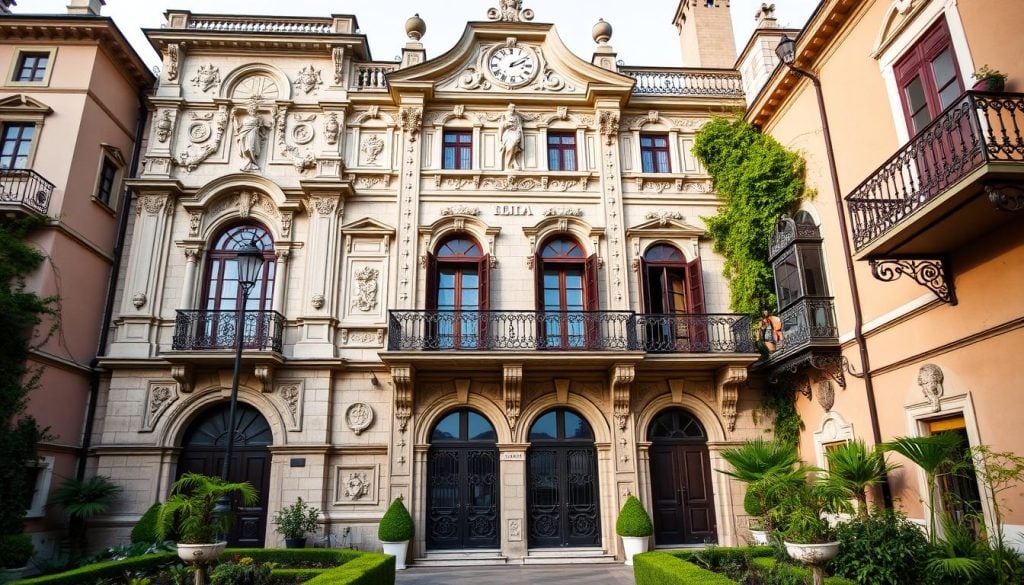
The De Piro Family Legacy
The de Piro family is a big part of Casa Rocca Piccola’s history. Their family has been around since the 16th century. They have a strong bond with Malta’s culture and traditions.
Their long stay at Casa Rocca Piccola has left a lasting mark. It has shaped not just the estate but also Maltese culture.
Historical Overview of the De Piro Family
The de Piro family’s history is closely tied to Malta’s past. They were part of the noble class in the 16th century. They played important roles in politics, arts, and social reform.
At Casa Rocca Piccola, they didn’t just live. They also made significant contributions to society.
Influence on Maltese Culture
The de Piro family has made a big impact on Maltese culture. They supported local artists and worked for the community’s betterment. Their efforts show their dedication to Malta’s growth.
Their archives, the Archivium de Piro, tell the story of their influence. They show how the family helped shape Maltese identity.
Cultural Significance of Casa Rocca Piccola
Casa Rocca Piccola connects visitors to Malta’s rich heritage. This historic home shows the beauty of Maltese life over the centuries. It highlights the grand architecture and the stories it holds.
The museum gives a peek into the de Piro family’s life. It showcases artifacts that reflect their lifestyle and values. Each piece tells a story, helping us understand Maltese heritage better.
Casa Rocca Piccola is more than just a museum. It’s a cultural center where you can explore Maltese arts, traditions, and customs. It deepens your appreciation for being part of the Maltese community.
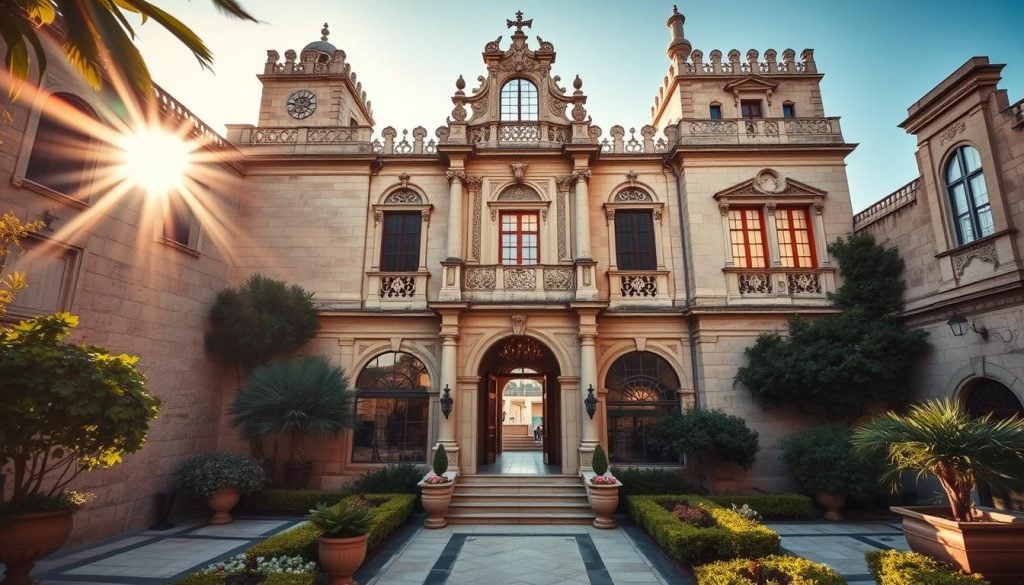
- Artifacts: Items that narrate the de Piro family’s lineage and lifestyle.
- Exhibits: Displays that celebrate Maltese arts and traditions.
- Visitor Engagement: Programs that invite the public to delve into Malta’s cultural heritage.
Casa Rocca Piccola helps us appreciate Maltese heritage deeply. Every visit helps preserve this legacy. It also gives us insights into Malta’s history and its people.
Casa Rocca Piccola as a Heritage Site
Casa Rocca Piccola is a key heritage site in Malta, showcasing the country’s rich culture and history. It’s crucial for preserving the history of Casa Rocca Piccola. Conservation efforts are ongoing to keep the building safe and its collections intact. This ensures that future generations can learn from and appreciate this historic home.
Recognition and Conservation Efforts
Casa Rocca Piccola is not just valued locally but also globally. It’s part of international heritage programs, highlighting its cultural importance. The preservation work includes:
- Regular maintenance of the building’s architecture
- Restoration of historical artifacts
- Documenting and cataloging collections for educational purposes
Thanks to these efforts, Casa Rocca Piccola remains a symbol of Malta’s noble past. It continues to be a beloved heritage site.
| Conservation Efforts | Description | Impact |
|---|---|---|
| Building Maintenance | Regular inspections and repairs to the structure | Preserved structural integrity |
| Artifact Restoration | Careful restoration of paintings and furniture | Enhanced historical relevance |
| Documenting Collections | Cataloging items for research and education | Improved public access to history |
Museum Collection and Artifacts
The museum at Casa Rocca Piccola showcases a wide range of artifacts. These pieces tell the story of Malta’s history. Visitors can see items that show off the skill and beauty of different times.
This collection is not just about decorative arts. It also gives a peek into the private lives of the de Piro family.
Furniture and Home Decor
The furniture and decor at Casa Rocca Piccola offer a unique look into the past. You’ll find:
- Antique wooden tables and chairs
- Intricately designed matching sets
- Unique decorative pieces reflecting local artistry
Each piece of furniture has its own story. It shows the elegance and social life of the time. These items bring to life the charm and heritage of Casa Rocca Piccola.
Archive of the De Piro Family
The archive at Casa Rocca Piccola gives a deep look into the de Piro family’s history. It includes:
- Letters spanning centuries
- Official family records
- Historical manuscripts detailing important events
These records help us understand the family’s big impact on Maltese culture and society. The museum collection and artifacts at Casa Rocca Piccola show the de Piro family’s historical significance.
Guided Tours at Casa Rocca Piccola
Visiting Casa Rocca Piccola lets you dive into Maltese history. The guided tours are well-planned. They offer a deep dive into the noble residence’s architecture and the de Piro family’s legacy. The stories shared make your visit unforgettable.
Visiting Hours and Ticket Information
Casa Rocca Piccola is open daily from 10 am to 5 pm. The last entry is at 4 pm. You can easily fit it into your schedule. Ticket prices are clear, so everyone can enjoy the history.
Don’t miss out on the guided tours. They’re more than just a building tour. They’re a journey through Malta’s culture and history. Your visit will leave you with memories and a new appreciation for Malta’s heritage.

































